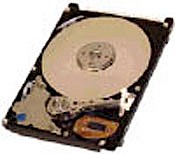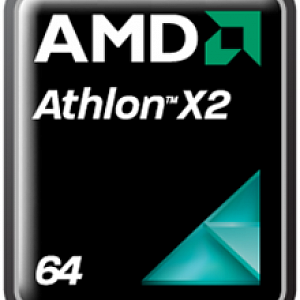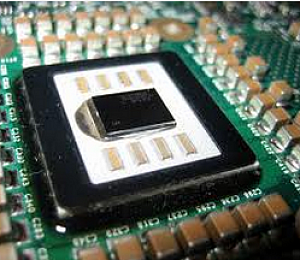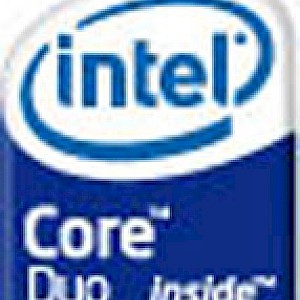Hard Disk Drive
High Capacity - GMR head
Website
Date Added
1 January 2007
Company
Categories
Subcategories
"In modern disk drives using the IBM innovations of magnetoresistive (MR) or giant magnetoresistive (GMR) heads, the bits are written and read by separate elements in a recording head as it flies over the spinning disk. A writing element writes bits onto the disk and a reading element read the bits by detecting the presence of their faint but tell-tale magnetic fields. The head itself is attached to a slider, an aerodynamically shaped block that allows the head to maintain a consistent flying height above the disk. In turn, the slider is connected to a suspension arm that is controlled by an actuator which can move the head to any track of bits on the disk, from the inner to the outer diameter. Special electronic circuits encode data from the computer's processor prior to writing, and decode the bit pattern after reading. Additional vital electronic circuits keep track of where data is stored on the disk so that it can be readily retrieved when needed, and monitor the motion of the disks and heads so their positions over the disks is always known precisely."
Supporting Info URL
"Carrying your entire media library just became a bit easier with the Seagate Wireless Plus ($199.99) drive. It's a 1TB hard drive with a built-in battery, media server, and Wi-Fi router, so you can share videos, photos, and music on the road. Instead of having to rely on streaming over potentially expensive 3G/4G Internet, you can stream video and music files to your smartphones, tablets, and laptops anywhere, even if there isn't any Internet access at all. It's a controllable alternative to hotel in-room movies, as well as a way to keep the kids entertained on a multi-hour journey in the car. It irons out many drawbacks on previous wireless drives, and gains our first Editor's Choice award for wireless media drives."
"As demand for higher areal densities and data rates increases, more sensitive heads are needed to maintain high quality read-back signals. Newer GMR heads that meet that need are already being shipped in hard drives. Since GMR technology also uses much of the design, production and test experience associated with AMR heads, it will evolve more readily and be shipping in virtually all WD desktop and enterprise drives by the close of 1999. GMR heads support areal densities greater than 10 gigabits per square inch. Western Digital’s EIDE desktop hard drives incorporating GMR heads are currently shipping. The high areal densities attainable with GMR heads enable hard drive products to offer a maximum storage capacity with a minimum number of components— i.e., heads and disks. Fewer components mean higher reliability, lower power requirements and lower storage costs."
"This paper is to analyze effect of the data flex cable and friction in the actuator rotary pivot bearing on performance of head positioning servo systems in micro hard disk drives (HDD). The micro HDD is one of trends in the disk drive industry, which can be used by portable devices such as digital cameras. A nonlinear model of the micro HDD will be established, where its configuration of nonlinearities will be identified with analysis of physical effects and its parameters will be determined with the Monte Carlo method. A control law will be designed to analyze effect of these torque disturbances on performance of head positioning servo systems through simulations and experiments." Kemao Peng; Guoyang Cheng; Chen, B.M.; Lee, T.H. (2003)
Nanomaterials
Functions of Nanomaterial
Location of Nanomaterial
How much we know
Additional Information
Related Products (similar nanomaterials and/or categories)
16Gb NAND Flash Memory
Company: Samsung®
Category: Electronics and Computers > Computer Hardware
Origin: USA
Nanomaterial: Silicon
How much we know: Category 4 (Unsupported claim)
45nm Processors
Company: AMD®
Category: Electronics and Computers > Computer Hardware
Nanomaterial: Silicon
How much we know: Category 4 (Unsupported claim)
AMD® Athlon™ 64 FX Processor
Company: AMD®
Category: Electronics and Computers > Computer Hardware
Origin: USA
Nanomaterial: Silicon
How much we know: Category 4 (Unsupported claim)
AMD® Athlon™ 64 X2 Dual-Core Processor
Company: AMD®
Category: Electronics and Computers > Computer Hardware
Origin: USA
Nanomaterial: Silicon
How much we know: Category 4 (Unsupported claim)
IBM® PowerPC® 970FX/970MP Processors
Company: IBM®
Category: Electronics and Computers > Computer Hardware
Origin: USA
Nanomaterial: Silicon
How much we know: Category 1 (Extensively verified claim)
Intel® Celeron® 4 Processor
Company: Intel®
Category: Electronics and Computers > Computer Hardware
Origin: USA
Nanomaterial: Silicon
How much we know: Category 3 (Manufacturer-supported claim)
Intel® Core™ Duo Processor
Company: Intel®
Category: Electronics and Computers > Computer Hardware
Origin: USA
Nanomaterials: Copper, Silicon
How much we know: Category 3 (Manufacturer-supported claim)
Intel® Pentium® 4 Processor
Company: Intel®
Category: Electronics and Computers > Computer Hardware
Origin: USA
Nanomaterial: Silicon
How much we know: Category 4 (Unsupported claim)
Intel® Pentium® D Processor
Company: Intel®
Category: Electronics and Computers > Computer Hardware
Origin: USA
Nanomaterial: Silicon
How much we know: Category 3 (Manufacturer-supported claim)
Intel® StrataFlash® Cellular Memory
Company: Intel®
Category: Electronics and Computers > Computer Hardware
Category: Electronics and Computers > Mobile Devices and Communications
Origin: USA
Nanomaterial: Silicon
How much we know: Category 3 (Manufacturer-supported claim)







